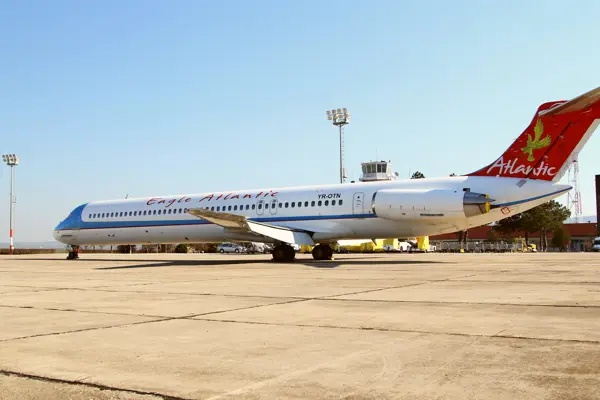The city on the Danube Delta
The city of Tulcea, set on seven hills just like Rome, is located where the Danube makes its last stop before flowing into the Black Sea. The story of Tulcea is an ancient one. It started as a prehistoric settlement, and then became a Greek and Roman colony. It was dominated by the Byzantines between the eighth and ninth centuries and then by the Genoese from the tenth to the thirteenth centuries; it became part of Wallachia of Prince Mircea cel Batran in 1393. In 1416, after the invasion of the Ottoman troops, the city was annexed, along with the entire Dobruja region, to the Ottoman Empire and took its current name in 1595 as is reported in documents from that time. It was finally reunited with Romania in 1878.
Nowadays, Tulcea is the largest port on the Danube and presents a modern aspect whilst maintaining its characteristic ancient charm. The heart of the city unwinds around the main square, Piata Republici, which includes, as well as the riverfront, the most important part of the touristic infrastructure such as hotels, restaurants and the typical pier with ferries that cross the Danube Delta and lead to Sulina. This town is unique as it is only accessible by boat as it has no roads that lead to rest of Romania.

A visit to the Museum of Art, the Muzeul de Arta, is a must. It is housed in a building that dates back 1870, the former residence of the Pasha, which features various collections of paintings and illustrations inspired by the region’s particular landscape. Here, the works of prominent Romanian artists can be viewed such as: Nicolae Tonitza, Theodor Pallady, Nicolae Grigorescu, Frederic Cicogna, Ion Jalea, Oscar Han and Victor Brauner. The Church of St Nicholas dates back to 1865 and is particularly beautiful; the Azzizie Mosque is also worth visiting for its historic and cultural heritage.
Equally interesting is the Danube Delta Museum or Muzeul Deltei Dunarii, which contains a rich naturalist collection and illustrates the characteristics of the delta, the natural reserve of the biosphere, its history, and its flora and fauna. The museum features an aquarium containing several species that can be found in the Danube Delta, such as sturgeon, tench, pike, catfish, but also several amphibians that usually live in this habitat. After visiting the museum, the more adventurous can deepen their knowledge by exploring the charm of the Danube Delta directly, which consists of a dense network of rivers and lakes divided into three main branches of the Danube estuary: Chilia, Sulina (navigable) and Sfantu Gheorghe. The city of Tulcea is located on the tip of these three canals and is an ideal starting point for the exploration of the Danube Delta, which was declared a World Heritage Site and Biosphere Reserve by UNESCO in 1990.
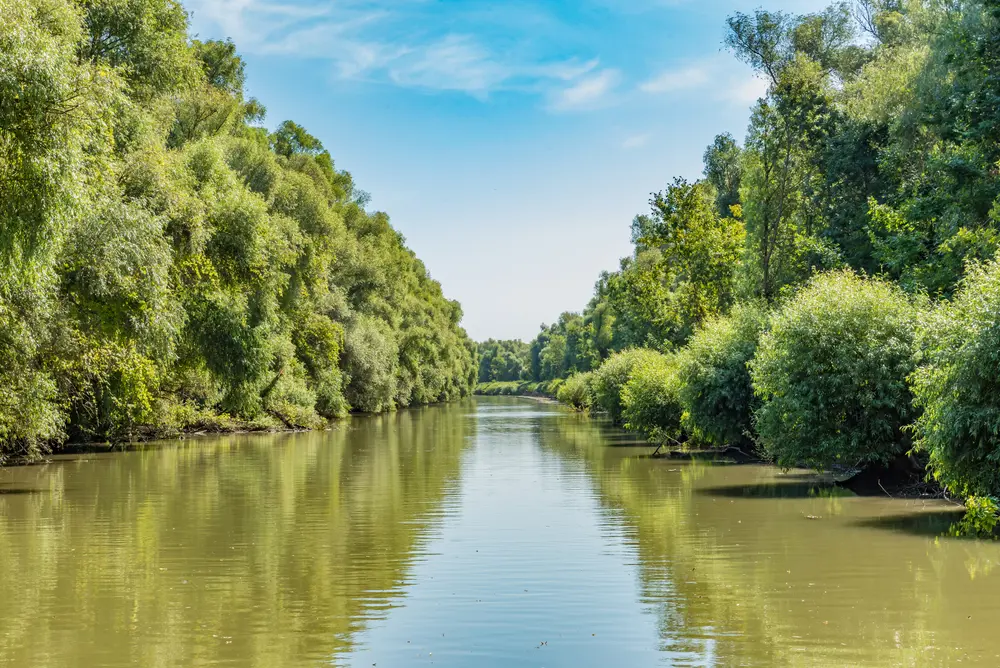
The area is dotted with floating islands made up of a tangle of rhizomes, roots from aquatic plants and earth. It is characterised by reeds, woods, pastures and sand dunes, covers an area of 2,681 square kilometres and is home to different species of wildlife. The aquatic flora is dominated by white and yellow water lilies and various types of reed which are an ideal resting place for different species of birds, native or migrating: pelicans, cormorants, ducks, geese and herons. Among the different mammals that inhabit the forest, boars, wolves, wild cats, stoats, otters and martens can be found. The hike around the area takes more than a day and a visit can be planned with a night spent in the local villages. Renting a fishing boat, a wooden kayak or a rowing boat for a tour allows for a deeper exploration of all these fascinating and remote areas.
By Alisè Vitri
Photo: Sisterscom.com Shutterstock
By Alisè Vitri
Photo: Sisterscom.com Shutterstock
Copyright © Sisterscom.com
All rights reserved.
where to go
Monuments and Museums
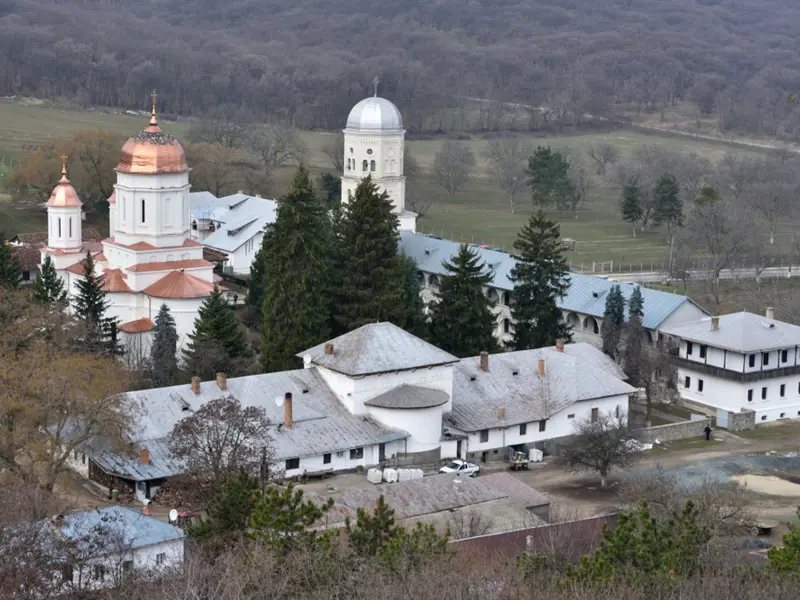
NICULITEL BASILICA
18 miles west of Tulcea
The town of Niculitel is known for its vineyards, but also for a Christian Basilica built in 370 AD during the reign of Emperor Valerius. In 1971, a violent rain washed away the earth concealing the church, revealing a unique monument, a crypt housing the bones of four Christian martyrs (Zotikos, Attalos, Kamasis and Phillipos). The four coffins can now be seen at Cocos Monastery.
The town of Niculitel is known for its vineyards, but also for a Christian Basilica built in 370 AD during the reign of Emperor Valerius. In 1971, a violent rain washed away the earth concealing the church, revealing a unique monument, a crypt housing the bones of four Christian martyrs (Zotikos, Attalos, Kamasis and Phillipos). The four coffins can now be seen at Cocos Monastery.
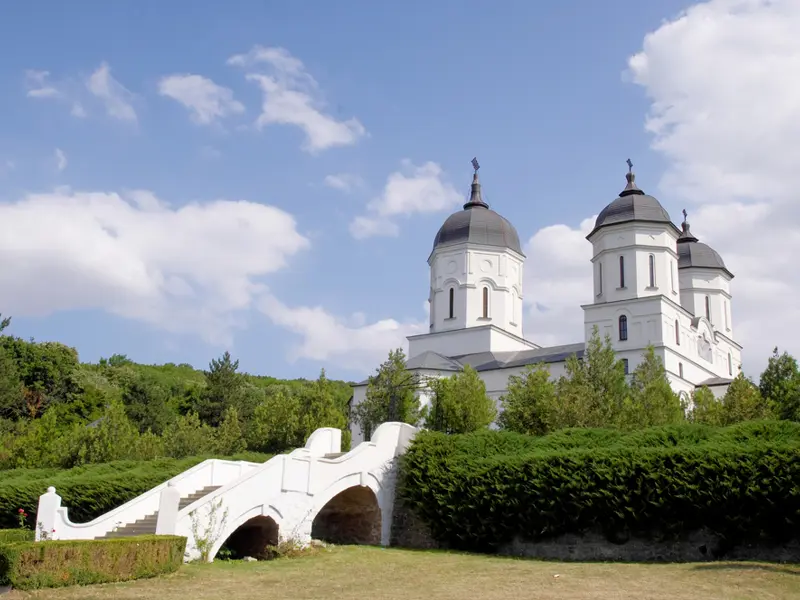 CELIC DERE MONASTERY
CELIC DERE MONASTERY 18 miles west of Tulcea
Celic Dere Monastery was established as a monastic settlement in 1841 by Romanian and Russian monks. The monastery's museum contains various religious objects, a rich collection of old books, antique handmade carpets and the oldest icon in Romania, brought from Mt. Athos in Greece.
Celic Dere Monastery was established as a monastic settlement in 1841 by Romanian and Russian monks. The monastery's museum contains various religious objects, a rich collection of old books, antique handmade carpets and the oldest icon in Romania, brought from Mt. Athos in Greece.
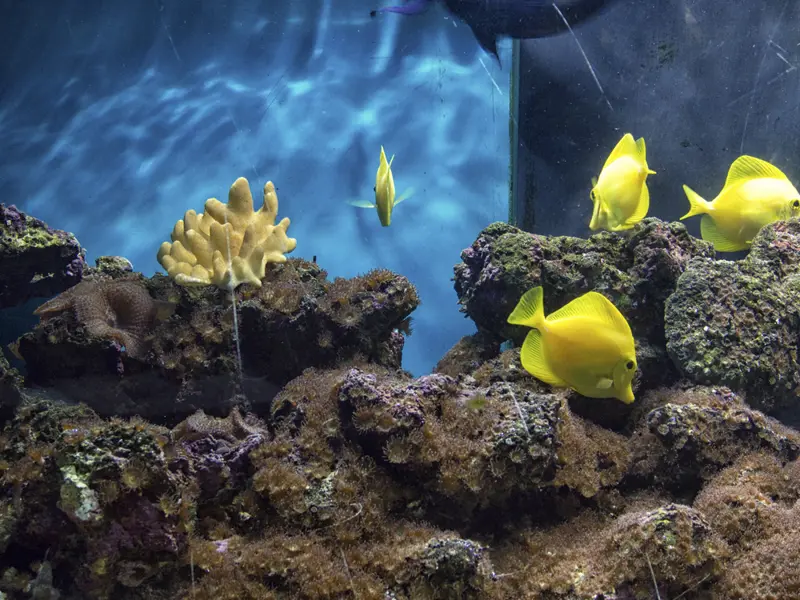
DANUBE DELTA NATURAL HISTORY MUSEUM
Str. Progresului 32
In the Danube Delta Natural History Museum can be found a good introduction to the region's flora and fauna plus the traditional way of life of the Danube Delta's fishermen. The live fish collection comprises local prey and domestic species from lakes, rivers and seas, as well as exotic species from Latin America, South America (northern part), southwest Asia and central Africa.
In the Danube Delta Natural History Museum can be found a good introduction to the region's flora and fauna plus the traditional way of life of the Danube Delta's fishermen. The live fish collection comprises local prey and domestic species from lakes, rivers and seas, as well as exotic species from Latin America, South America (northern part), southwest Asia and central Africa.
ART MUSEUM
Str. Grigore Antipa 2
The Art Museum houses over 700 glass and wooden icons, as well as an interesting collection of vanguard paintings and sculptures by some of Romania's prominent artists: Nicolae Tonitza, Theodor Pallady, Nicolae Grigorescu, Frederic Stork, Ion Jalea, Oscar Han and Victor Brauner.
The Art Museum houses over 700 glass and wooden icons, as well as an interesting collection of vanguard paintings and sculptures by some of Romania's prominent artists: Nicolae Tonitza, Theodor Pallady, Nicolae Grigorescu, Frederic Stork, Ion Jalea, Oscar Han and Victor Brauner.
HISTORY AND ARCHEOLOGY MUSEUM
Str. Gloriei
The History and Archeology Museum presents a history of the northern Dobrogea region from ancient times to the medieval age. On display are some 90,000 archaeological objects, numismatic pieces and old documents organized in special collections which include ceramics, bronzes, sculptural and epigraphic pieces, jewels and paleo-Christian objects.
The History and Archeology Museum presents a history of the northern Dobrogea region from ancient times to the medieval age. On display are some 90,000 archaeological objects, numismatic pieces and old documents organized in special collections which include ceramics, bronzes, sculptural and epigraphic pieces, jewels and paleo-Christian objects.
Excursions
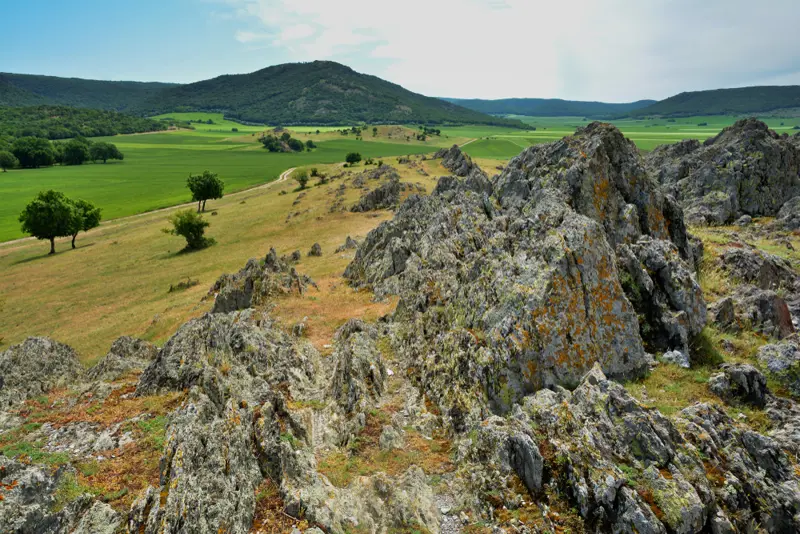
MACIN MOUNTAINS NATIONAL PARK
50 miles west of Tulcea
400 million years ago, this mountain range stretched all the way to western Europe. Its traces can still be found in Bohemia and the French Central Massif. Today, Tutuiatu Peak, the highest peak of the oldest mountain range in Romania, reaches just 1,495 metres. Many streets in Istanbul and Marseille have been paved with granite extracted from the Macin Mountains, and the gray granite was used in the construction of the Olympic Stadium in Munich, where the 1972 Olympics were held.
www.muntiimacin.ro
400 million years ago, this mountain range stretched all the way to western Europe. Its traces can still be found in Bohemia and the French Central Massif. Today, Tutuiatu Peak, the highest peak of the oldest mountain range in Romania, reaches just 1,495 metres. Many streets in Istanbul and Marseille have been paved with granite extracted from the Macin Mountains, and the gray granite was used in the construction of the Olympic Stadium in Munich, where the 1972 Olympics were held.
www.muntiimacin.ro
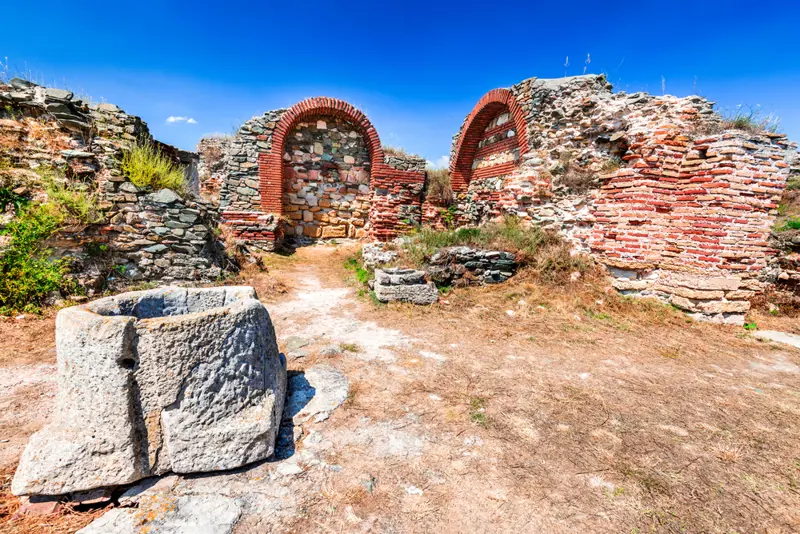
HISTRIA FORTRESS AND LAKE SINOE
46 miles south of Tulcea
Histria Fortress, know also like the “Pompei of Romania“, was the oldest Greek settlement in Romania. Founded in the 7th century BC by Greeks became the main Greek port on the Black Sea. Near Histria Fortress, you can visit one of the most beautiful lagoons in the country, Lake Sinoe, an extension of Lake Razim. The area is a stretch of marshy land and reedbeds popular also for bird-watching, especially in November when thousands of red-breasted geese arrive from the Arctic.
Histria Fortress, know also like the “Pompei of Romania“, was the oldest Greek settlement in Romania. Founded in the 7th century BC by Greeks became the main Greek port on the Black Sea. Near Histria Fortress, you can visit one of the most beautiful lagoons in the country, Lake Sinoe, an extension of Lake Razim. The area is a stretch of marshy land and reedbeds popular also for bird-watching, especially in November when thousands of red-breasted geese arrive from the Arctic.
Luxury
Airports nearby Tulcea



